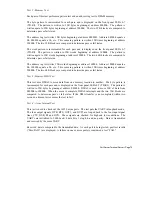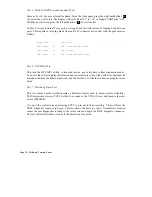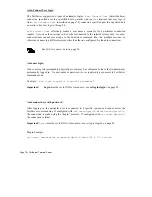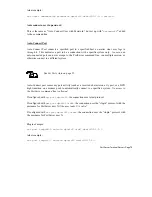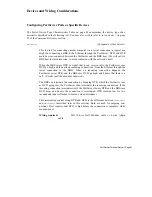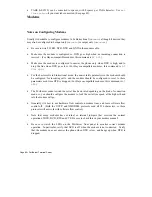
Page 86
Ÿ
PortServer Terminal Server
•
TABS (ASCII 9) can be converted to spaces, with 8 spaces per TAB character. Use
set
line
otab=on
if you want tabs converted. (See page 49).
Modems
Notes on Configuring Modems
Usually its desirable to configure modems to be bidirectional (
dev=mio
) although if desired they
may also be configured to be input only (
dev=min
) or output only (
dev=mout
).
•
Be sure to wire TD, RD, DCD, DTR and GND in the modem cable.
•
Make sure the modem is configured so DCD goes high when an incoming connection is
received. (For Hayes-compatible modems, this command is
AT &C1
.)
•
Make sure the modem is configured to answer the phone only when DTR is high, and to
drop the line when DTR goes low. (For Hayes-compatible modems, this command is
AT
S0=1
&D3
.)
•
For the best results in bidirectional mode, the non-volatile parameters in the modem should
be configured for incoming calls, and the modem should be configured to reset to these
parameters each time DTR is dropped. (For Hayes-compatible modems, this command is
AT
&D3
.)
•
The PortServer cannot switch the serial line baud rate depending on the kind of connection
made, so you should configure the modem to lock the serial line speed at the highest baud
rate the modem will go.
•
Generally it is best to use hardware flow control on modem lines, and leave software flow
control off. (Both the UUCP and XMODEM protocols send all 256 characters, so these
protocols will not work with software flow control.)
•
Note that many modems have external or internal jumpers that override the normal
operation of DTR, DCD, RTS and CTS. Be sure to check this in your modem manual!
•
Be sure to watch the LEDs on the PortServer front panel to monitor correct modem
operation. In particular, verify that DCD is off when the modem is not connected. Verify
that the modem does not answer the phone when DTR is low, and hangs up when DTR is
dropped.




